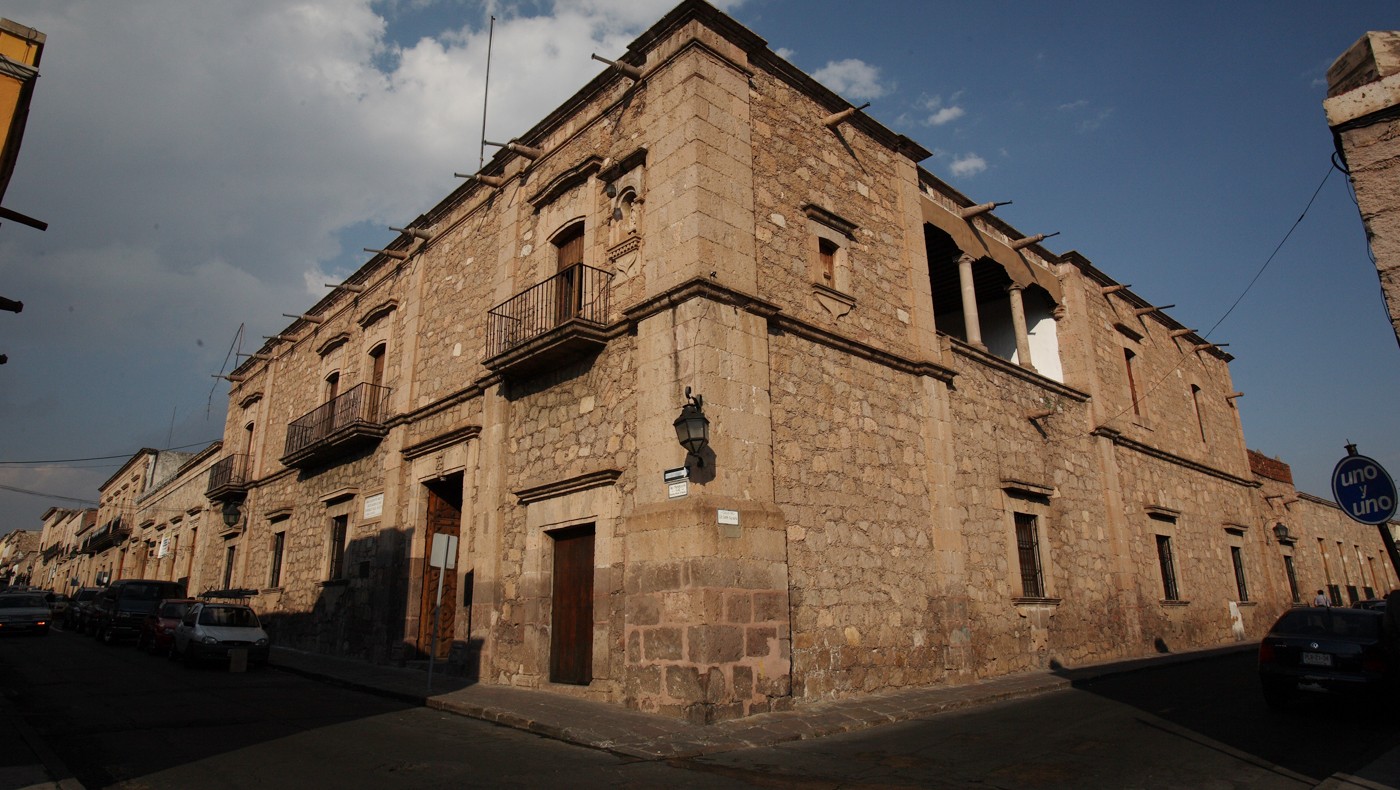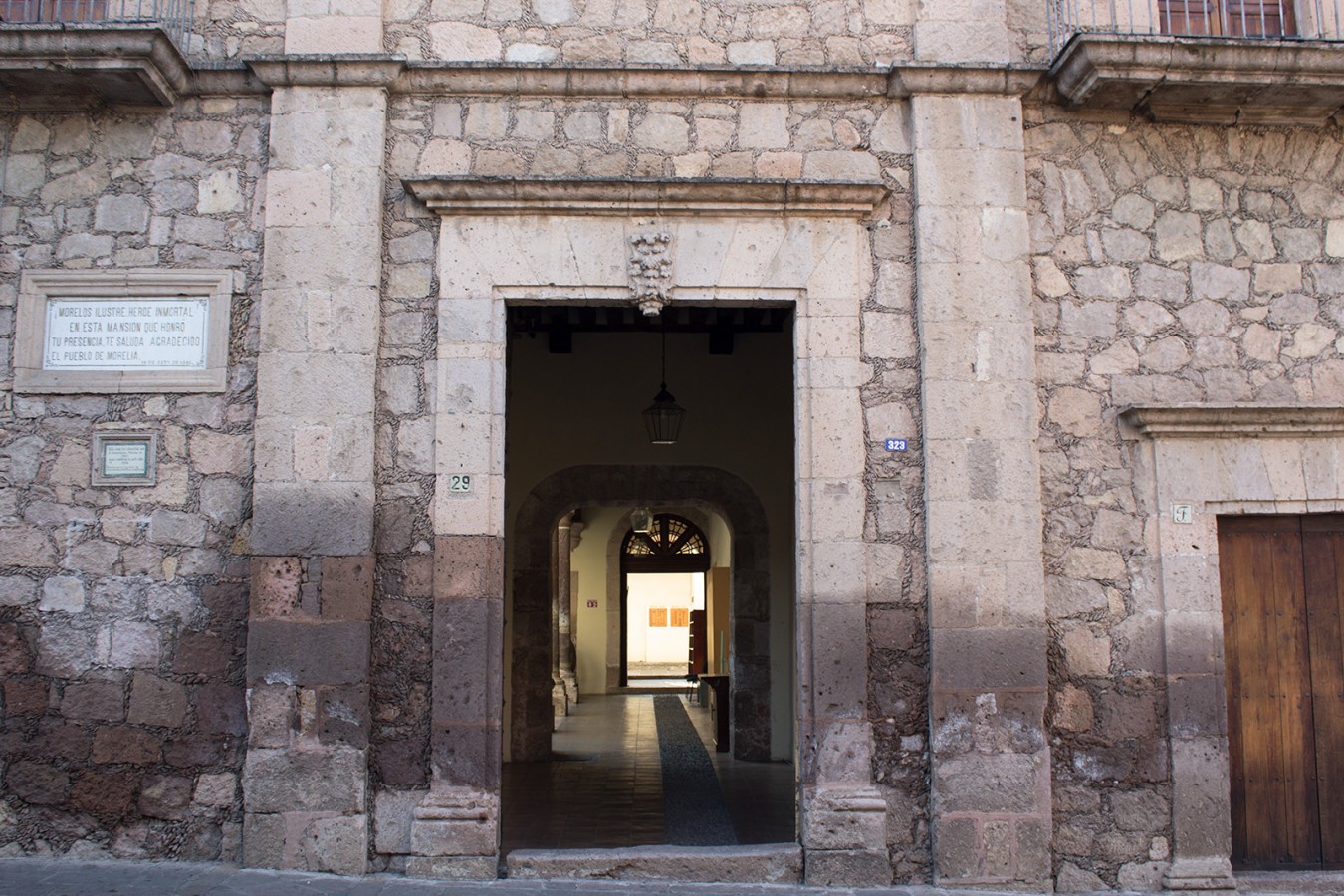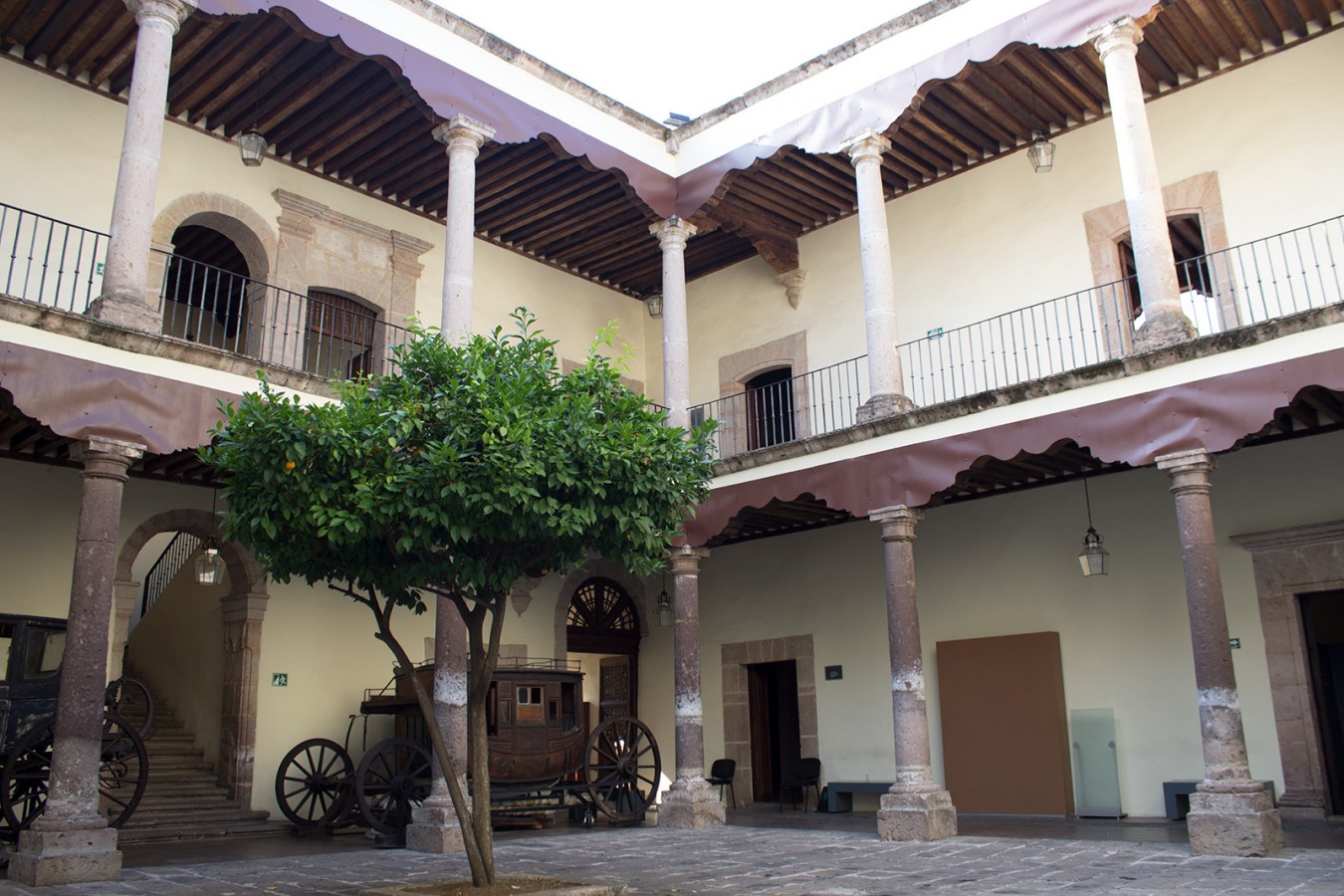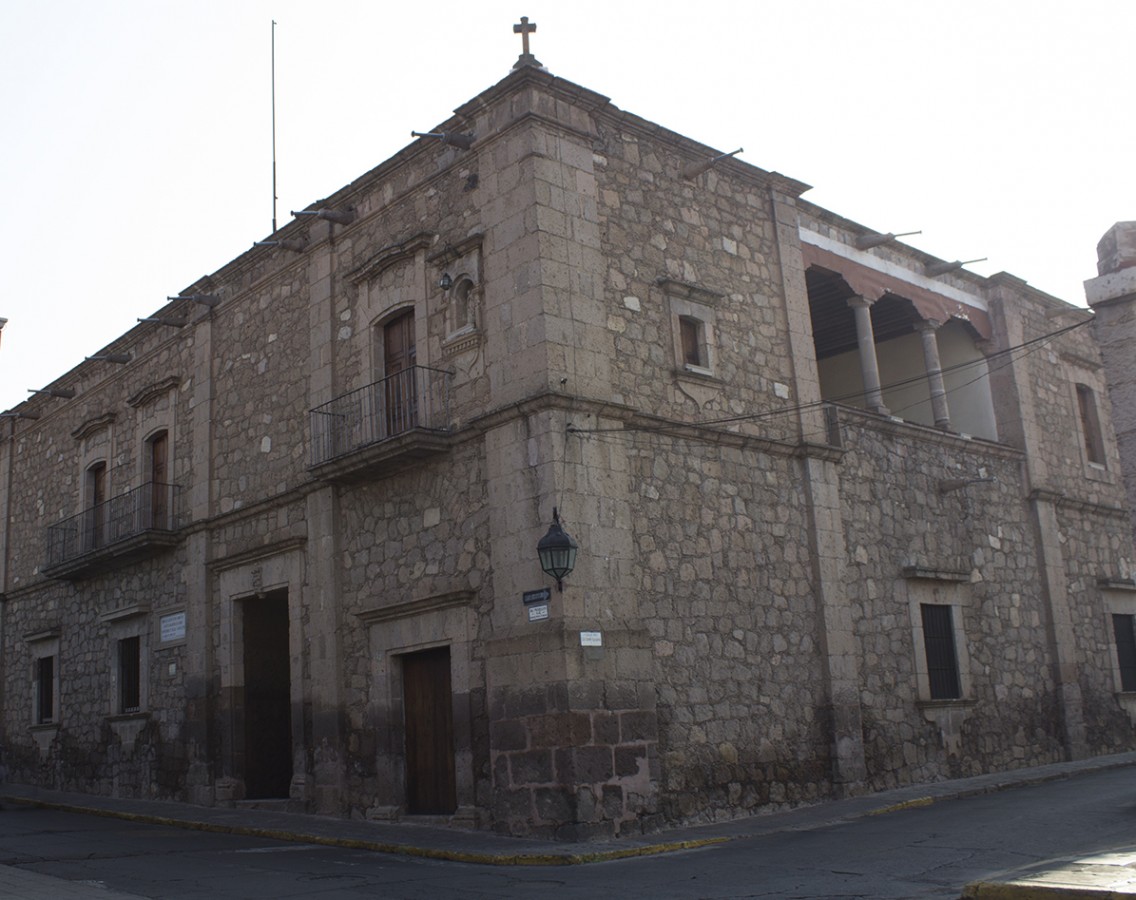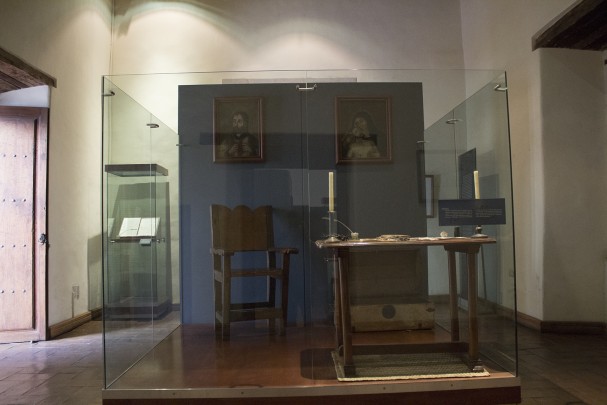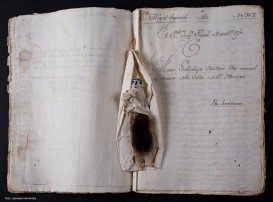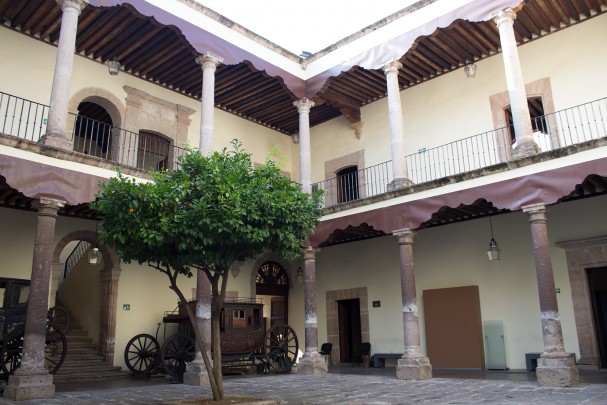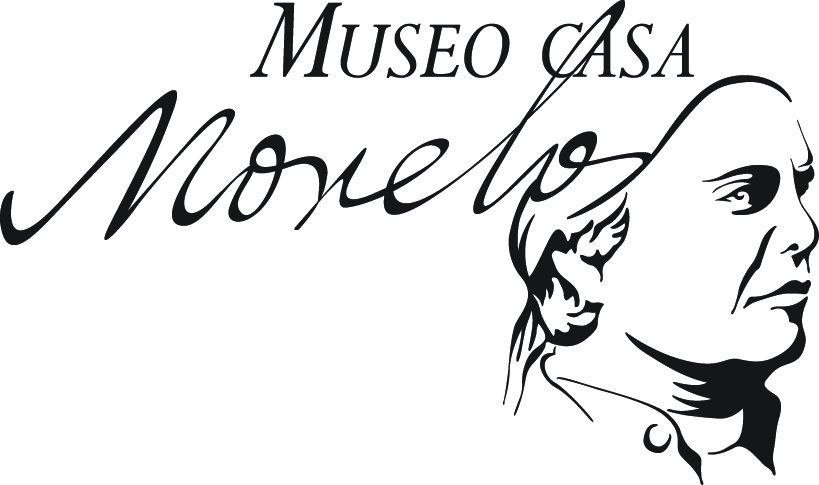Museo y Archivo Histórico Casa de Morelos
The house that José María Morelos bought in 1801, in Valladolid (Morelia), for his sister to live in, houses a magnificent museum about his life and his role in the War of Independence, as well as the archives of two million documents from the Bishopric and Government of Michoacan.
Historic place
About the museum
The Morelos House Museum and Historical Archive has preserved a large part of the documents generated by the church administration of the old diocese of Michoacan since 1932. This collection is complemented by the archives currently held by the History Archive of Morelia Cathedral. The Morelos House Historical Archive consists of two great collections: one ecclesiastical, in relation to the diocesan curia and secretariat, and the other civil, with information on state and municipal governments. There is also a monastic collection with 1,507 books. The timespan covered by the archive is from the seventeenth to twentieth centuries.
Published sources indicate that the first confiscation of ecclesiastical documents from Morelia Cathedral by the civil government took place in 1860, with a second between 1914 and 1917, which is why the papers for certain years were kept in various of the city of Morelia’s buildings, including Michoacan Museum. In 1932 Narciso Bassols, the Education Minister of the day, asked the Michoacan government to look for suitable space for the storage, cataloging and to public access to the archives. The house of Morelos was the place chosen, and the final transfer of the collection took place the same year.
When the National Institute of Anthropology and History (INAH) was created in 1939, the archive collection came under its care alongside the museum, and the work of sorting and classifying the archive began. Between 1990 and 1994 a new project to classify the archive of the Morelos House Historical Archive began under the direction of the National Library of Anthropology and History and consequently the historical files were organized into three large collections: Diocesan, Council of Canons and Parochial, each subdivided into sections, series and sub-series.
In 2010 the Morelos House Historical Archive was furnished with a new archival infrastructure with a high density storage system paid for by the fund created to celebrate the Bicentenary of Mexican Independence. A comprehensive restoration of the building was also carried out through the offices of INAH, which was accompanied by a new museum display based on an updated curatorial brief, incorporating new and up-to-date display technology, as well as cultural material with a very high aesthetic and historical value. It is also important to mention the document digitalization processes carried out in the second half of 2012 and in 2014, thanks to which it is possible to consult the digital archive from the seventeenth century and part of the eighteenth century.
The building which now houses the Morelos House Museum and Historical Archive was built in two stages. The ground floor was completed in 1758. Notaries’ records from the city of Valladolid, the old name for Morelia, mention that in 1774 the Probate Court granted the property to Mr. Anastasio Martínez, who left it to his son, Juan José. José María Teclo Morelos y Pavón, the village priest of Caracuaro, acquired the property in August 1801, making a few changes such as the construction of the second floor.
Antonia Morelos, the cleric’s sister and her husband Miguel Cervantes lived in the house, and they also rented out some ancillary rooms on the ground floor of the building. In May 1810 José María Morelos mortgaged the house for the value of 1,000 pesos to pay a debt, and in March 1811, in the midst of the War of Independence, Torcuato Trujillo, the head of Valladolid’s municipal government seized the house of the rebellious priest and ordered its partial demolition.
Once the war had ended in 1822, the independent government recognized the rights of ownership of Antonia and Nicolás Morelos, the siblings of Don José María, and they immediately began to work on reconstructing the house. Upon the death of Antonia Morelos in 1830, the building passed into the hands of her daughter Teresa and her husband Nicolás Pérez Dueñas, and they took charge of the building’s care and maintenance with the help of their children Vicente, Guadalupe and Francisco de Paula. Then in 1867 Francisco de Paula married Mariana Aguilar and they had three children, Nicolás, Concepción and Catalina, who subsequently took on the job of caring for the house of their illustrious ancestor.
During the preparations to celebrate the centenary of the start of the war of rebellion, President Porfirio Díaz issued an instruction for the Morelos House to be purchased in the name of the federal government. His intention was to create a Museum of Independence. The sale went through on June 25, 1910. Nevertheless the house continued under the custody of the Pérez Morelos family, with for example Nicolás Pérez Morelos forming a Patriotic Committee in 1921 to organize festivities and an exhibition commemorating the Centenary of the Consummation of Mexican Independence. Nicolás Pérez’s civic zeal as the organizer of this and other events was recognized in 1923, when he was appointed “Guardian of the house of Morelos.” When Nicolás died in 1930, the honorary role passed to his sister Catalina, who died four years later, leaving Concepción Pérez Morelos in charge of caring for the house of Morelos. She continued in this role until her death in 1949.
Throughout its history the house of Morelos has endured various architectural interventions, from the addition of the second floor at the behest of Don José María Morelos in 1809, with other modifications made to the building by the descendants of the rebellious hero between 1838 and 1840, although the most comprehensive restoration took place in 1934 under the aegis of the Office of Colonial Monuments of the Republic. It is also worth mentioning the publication in 1947 of a classic work: Morelos. Su casa y su casta en Valladolid (Morelia), (Morelos. His House and his Milieu in Valladolid, Morelia).
The Morelos House Museum has nine permanent exhibition galleries and two introductory areas which set the scene for visitors to delve deeper into the subject of the founding of the diocese of Michoacan and the city of Valladolid, as well as giving information on some aspects of daily life in the last quarter of the eighteenth century. The story of the house and its inhabitants is also told, including the life of Don José María Morelos and the period of the Enlightenment in New Spain, specifically in Valladolid. On the upper floor the galleries look at the period from 1808 to 1815, in other words the start of the process of independence until the capture and execution by firing squad of Morelos on December 22, 1815. The main patio displays two carriages which have become emblems of the museum, and the east corridor of the building contains a small traditional kitchen.
Published sources indicate that the first confiscation of ecclesiastical documents from Morelia Cathedral by the civil government took place in 1860, with a second between 1914 and 1917, which is why the papers for certain years were kept in various of the city of Morelia’s buildings, including Michoacan Museum. In 1932 Narciso Bassols, the Education Minister of the day, asked the Michoacan government to look for suitable space for the storage, cataloging and to public access to the archives. The house of Morelos was the place chosen, and the final transfer of the collection took place the same year.
When the National Institute of Anthropology and History (INAH) was created in 1939, the archive collection came under its care alongside the museum, and the work of sorting and classifying the archive began. Between 1990 and 1994 a new project to classify the archive of the Morelos House Historical Archive began under the direction of the National Library of Anthropology and History and consequently the historical files were organized into three large collections: Diocesan, Council of Canons and Parochial, each subdivided into sections, series and sub-series.
In 2010 the Morelos House Historical Archive was furnished with a new archival infrastructure with a high density storage system paid for by the fund created to celebrate the Bicentenary of Mexican Independence. A comprehensive restoration of the building was also carried out through the offices of INAH, which was accompanied by a new museum display based on an updated curatorial brief, incorporating new and up-to-date display technology, as well as cultural material with a very high aesthetic and historical value. It is also important to mention the document digitalization processes carried out in the second half of 2012 and in 2014, thanks to which it is possible to consult the digital archive from the seventeenth century and part of the eighteenth century.
The building which now houses the Morelos House Museum and Historical Archive was built in two stages. The ground floor was completed in 1758. Notaries’ records from the city of Valladolid, the old name for Morelia, mention that in 1774 the Probate Court granted the property to Mr. Anastasio Martínez, who left it to his son, Juan José. José María Teclo Morelos y Pavón, the village priest of Caracuaro, acquired the property in August 1801, making a few changes such as the construction of the second floor.
Antonia Morelos, the cleric’s sister and her husband Miguel Cervantes lived in the house, and they also rented out some ancillary rooms on the ground floor of the building. In May 1810 José María Morelos mortgaged the house for the value of 1,000 pesos to pay a debt, and in March 1811, in the midst of the War of Independence, Torcuato Trujillo, the head of Valladolid’s municipal government seized the house of the rebellious priest and ordered its partial demolition.
Once the war had ended in 1822, the independent government recognized the rights of ownership of Antonia and Nicolás Morelos, the siblings of Don José María, and they immediately began to work on reconstructing the house. Upon the death of Antonia Morelos in 1830, the building passed into the hands of her daughter Teresa and her husband Nicolás Pérez Dueñas, and they took charge of the building’s care and maintenance with the help of their children Vicente, Guadalupe and Francisco de Paula. Then in 1867 Francisco de Paula married Mariana Aguilar and they had three children, Nicolás, Concepción and Catalina, who subsequently took on the job of caring for the house of their illustrious ancestor.
During the preparations to celebrate the centenary of the start of the war of rebellion, President Porfirio Díaz issued an instruction for the Morelos House to be purchased in the name of the federal government. His intention was to create a Museum of Independence. The sale went through on June 25, 1910. Nevertheless the house continued under the custody of the Pérez Morelos family, with for example Nicolás Pérez Morelos forming a Patriotic Committee in 1921 to organize festivities and an exhibition commemorating the Centenary of the Consummation of Mexican Independence. Nicolás Pérez’s civic zeal as the organizer of this and other events was recognized in 1923, when he was appointed “Guardian of the house of Morelos.” When Nicolás died in 1930, the honorary role passed to his sister Catalina, who died four years later, leaving Concepción Pérez Morelos in charge of caring for the house of Morelos. She continued in this role until her death in 1949.
Throughout its history the house of Morelos has endured various architectural interventions, from the addition of the second floor at the behest of Don José María Morelos in 1809, with other modifications made to the building by the descendants of the rebellious hero between 1838 and 1840, although the most comprehensive restoration took place in 1934 under the aegis of the Office of Colonial Monuments of the Republic. It is also worth mentioning the publication in 1947 of a classic work: Morelos. Su casa y su casta en Valladolid (Morelia), (Morelos. His House and his Milieu in Valladolid, Morelia).
The Morelos House Museum has nine permanent exhibition galleries and two introductory areas which set the scene for visitors to delve deeper into the subject of the founding of the diocese of Michoacan and the city of Valladolid, as well as giving information on some aspects of daily life in the last quarter of the eighteenth century. The story of the house and its inhabitants is also told, including the life of Don José María Morelos and the period of the Enlightenment in New Spain, specifically in Valladolid. On the upper floor the galleries look at the period from 1808 to 1815, in other words the start of the process of independence until the capture and execution by firing squad of Morelos on December 22, 1815. The main patio displays two carriages which have become emblems of the museum, and the east corridor of the building contains a small traditional kitchen.
Map
An expert point of view
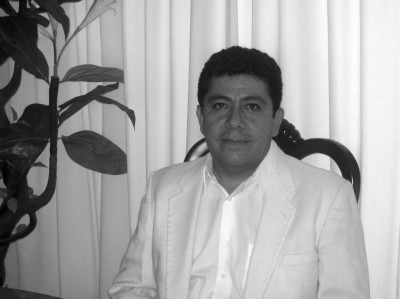
Moisés Guzmán Pérez
Centro INAH Michoacán
Practical information
Museum: Tuesday to Friday from 9:00 to 17:00 hrs. Archive: Tuesday to Friday from 9:00 to 17:00 hrs.
$75.00 pesos
Avenida Morelos Sur 323, esquina Lic. Soto Saldaña,
Zona Centro, C.P. 58000,
Morelia, Michoacán, México.
Zona Centro, C.P. 58000,
Morelia, Michoacán, México.
Services
-
+52 (443) 313 2651
-
This email address is being protected from spambots. You need JavaScript enabled to view it.
-
FACEBOOK
Directory
Directora
Diana Alvarado Martínez
This email address is being protected from spambots. You need JavaScript enabled to view it.
+52 (443) 313 2651

